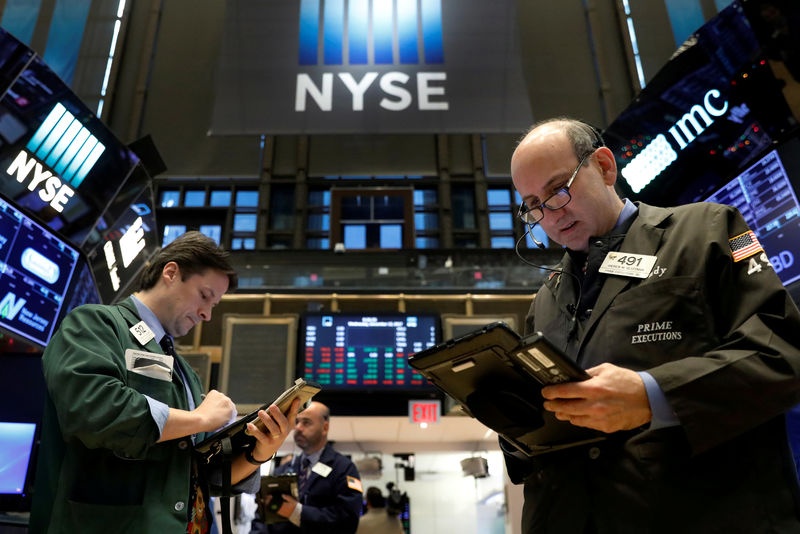 © Reuters. FILE PHOTO: Traders work on the floor of the NYSE in New York
© Reuters. FILE PHOTO: Traders work on the floor of the NYSE in New YorkBy Trevor Hunnicutt
(Reuters) – Investors scooped up commodities on Tuesday during a holiday-shortened week, but took a far more mixed view of U.S. equities as shares of Apple Inc (NASDAQ:) sagged.
The main equity gauges on Wall Street were under pressure following a 2.6 percent drop in Apple’s shares on reports of weak iPhone X demand.
Many markets around the world, including in parts of Europe and Asia, were shut on Tuesday after the Christmas Day holiday, and trading volumes were light.
Commodities firmed, with oil moving to its highest since 2015, supported by an explosion on a crude pipeline in Libya and voluntary supply cuts led by the Organization of the Petroleum Exporting Countries.
Gold prices hit more than three-week highs, and palladium hit its highest since February 2001 on supply worries.
() rebounded from a brutal selloff last week. The digital asset gained 14 percent on Tuesday, rising to nearly $16,000 on the Bitstamp exchange, after sinking by more than a quarter from Dec 16 to 25.
Apple put a damper on an equity market that has posted strong gains in 2017 on the back of a U.S. tax bill signed into law last week and stronger sales that were expected to extend into the holiday season.
Yet, bearish brokerage calls on iPhone X demand put the company’s shares on track for their worst single-day percentage fall since Aug. 10. The company will slash its sales forecast for its flagship phone in the current quarter to 30 million units, down from what it said was an initial plan of 50 million units, Taiwan’s Economic Daily reported, citing unidentified sources.
The news hit shares of Apple suppliers, including Broadcom (O:), Skyworks Solutions (O:), Finisar (O:) and Lumentum Holdings (O:).
“There probably are a good number of U.S. investors that have slight to moderate overexposure to domestic stocks – we’ve had a great performance year,” said Invesco Ltd (N:) Chief Global Market Strategist Kristina Hooper.
“It could be an opportunity to do some profit-taking, a little bit of trimming, and moving to areas that have lower valuations.”
The Dow Jones Industrial Average () fell 5.09 points, or 0.02 percent, to 24,748.97, the S&P 500 () lost 2.44 points, or 0.09 percent, to 2,680.9 and the Nasdaq Composite () dropped 27.91 points, or 0.4 percent, to 6,932.05.
MSCI’s gauge of stocks across the globe () shed 0.04 percent.
Two-year U.S. Treasury yields rose to nine-year highs, exacerbating a collapse of the gap in yields between short and long-term bonds. The gap between 2-year and 10-year yields shrank to 58.6 basis points as investors focused on new supply that will be sold into the light market this week.
Benchmark 10-year notes () last rose 7/32 in price to yield 2.4648 percent, from 2.488 percent late on Friday. The 2-year note () last fell 1/32 in price to yield 1.9033 percent, from 1.895 percent.
Currencies were mixed. The (), tracking the U.S. unit against a basket of major currencies, fell 0.1 percent, with the euro
The Japanese yen strengthened 0.05 percent versus the greenback to 113.21 per dollar, while sterling
Emerging market stocks lost 0.18 percent. MSCI’s broadest index of Asia-Pacific shares outside Japan () closed 0.24 percent lower, while Japan’s Nikkei () lost 0.20 percent.
Source: Investing.com




























